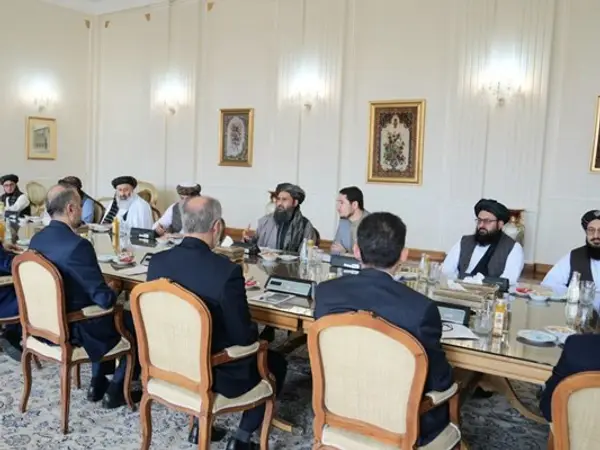Amid impasse on issues such as migrants and water rights between Iran and Afghanistan, a 30-member Taliban “economic delegation” arrived in Tehran on Saturday.
The Afghan delegation is led by Abdul Ghani Baradar, First Deputy Prime Minister for Economic Affairs of Afghanistan and a co-founder of the Taliban along with Mullah Omar.
According to Afghan sources, the delegation, consisting of 30 Taliban officials, were to hold talks with Iranian authorities on trade, transit, transportation, infrastructure, and railways, as well as regional development and the issue of the growing number of Afghan migrants in Iran.
Iran’s capital Tehran hosted the delegation in the framework of an Iran-Afghanistan Joint Economic Committee meeting, the first after Taliban took over Afghanistan in 2021. Iranian Agriculture Minister Mohammad-Ali Nikbakht and President Ebrahim Raisi’s special envoy for Afghanistan Hassan Kazemi-Qomi were among the senior officials representing the Iranian side.
There is little concrete information about the outcome of the meetings, except calls to bolster relations and facilitate trade. However, among the more pressing issues in Tehran-Kabul ties are the issue Afghan migrants in Iran and water rights in eastern Iran, especially over Hirman/Helmand river that is the main source of irrigation water in western Afghanistan and eastern Iran. According to Iran’s state media the two parties agreed to form several taskforces to follow up on the issues of mutual interest.
Amid the escalating Hamas-Israel conflict, the visit by the Afghan delegation can also be related to security issues. Baradar also held a meeting with Iran’s top security chief Ali-Akbar Ahmadian, the Secretary of the Supreme National Security Council and a close aide to the Supreme Leader. “Afghanistan will not pose a threat to any of its neighbors,” the Taliban official said according to IRNA.
In August, an Iranian parliamentary delegation visited Kabul to address the water crisis in Sistan and Baluchestan, stemming from Taliban’s Helmand River flow obstruction. Iran says that the Taliban have restricted the water flow to Iran’s parched eastern regions, but this accusation is denied by the Taliban.
In the past few weeks, the the Iranian government’s critics have repeatedly warned about its “open borders” policy and the possibility of a hidden agenda, with hardliners responding to such criticism by accusing critics of inciting “Afghanophobia” amid fast-growing anti-Afghan sentiments on social media and violence against the immigrants.
The Islamic Republic adopted an unprecedentedly lenient approach to Afghan migration when hardliner President Ebrahim Raisi took office in Iran two years ago and the Taliban formed a government in neighboring Afghanistan.
Some government critics claim authorities are actively encouraging illegal Afghan immigration to remedy the problem of population decline or even to bolster its military by recruiting young Shiite Hazara Afghans.
The IRGC-linked Fars news agency has accused a “shadowy political group” of seeking to cause tension between the Islamic Republic and the Taliban by expressing concerns about the increase in the number of Afghans in Iran.
As the debate intensified, Iran’s interior minister insisted that the number of Afghans has reached 5 million, but others in local media countered that the refugees are as many as 8 million or even higher. That would be around 10 percent of Iran’s population.
In April 2021, Foreign Minister Hossein Amir-Abdollahian said one million more Afghans had entered Iran since the Taliban took power in August the previous year, bringing Iran’s official number of refugees and economic migrants to five million.
In a commentary in July, Aftab News, a website close to former President Hassan Rouhani and the moderate conservative Moderation and Development Party, warned that “the massive increase in the number of Afghans” is the result of authorities’ active policy to encourage the growth of the Afghan population including allowing them the right to buy property and access to services such as education and healthcare.





















